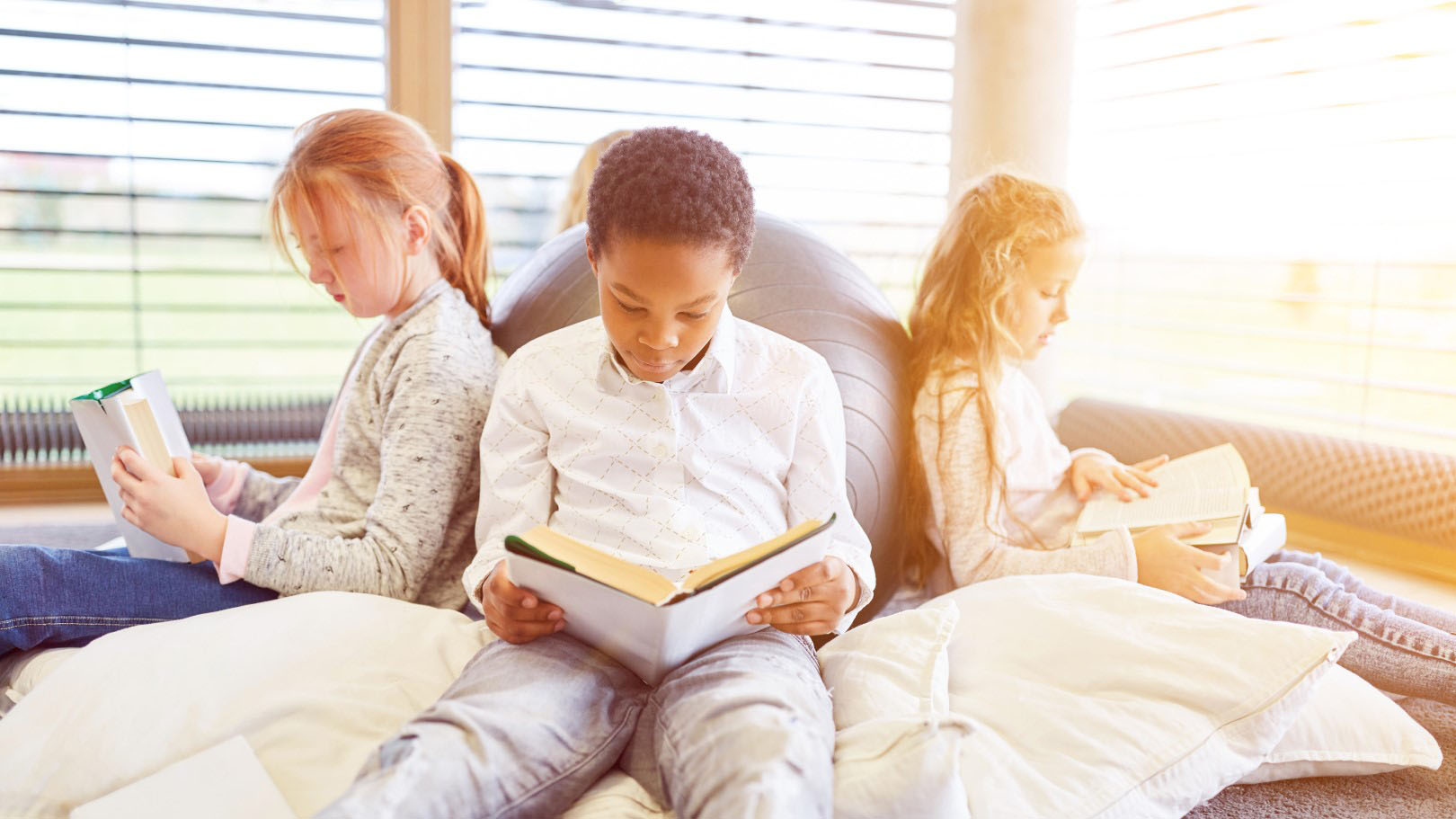Listed Building Consent for East Cloister at Haileybury.
Saunders have received Listed Building Consent this week for restoration works to the East Cloister ...
Wide
Standard
Large Tablet
Small Tablet
mobile


The design of a school can support the health and wellbeing of students and teachers. Education specialist, Annabel Lait discusses what it is that informs the design of a great school.
Good health and wellbeing is one of the UN’s Sustainable Goals and it is an area that has risen in prominence in recent years. The COVID-19 pandemic highlighted the importance of wellbeing for us all and particularly for children. Not only were children dealing with the fear generated by the pandemic itself but subsequent lockdowns and ongoing restrictions adversely impacted their daily routines and norms: diminishing opportunities for learning, social opportunities, music and sports, and in some cases, destroying confidence and excitement about the future. A lot of work needs to be done to improve the wellbeing of our children and rebuild their confidence in themselves and the world around them.
Stress and negative feelings often manifest in the places where we spend the greatest amount of our time. For children, this means school. Some young people are significantly more susceptible than others to mental health issues, including those living in poverty, young carers or simply by dint of being male. This is not to suggest, of course, that girls are not also vulnerable, but the overall prevalence of mental health problems is higher in boys (Green et al, 2005). It is clear that schools need to establish strategies to support wellbeing, both emotionally and physically.
As well as creating emotionally stable adults, wellbeing is recognised as being linked to academic achievement. Helping schools to continue to implement various policies to carefully nurture pupils and staff in a conscious effort to support positive cognitive development is really important. Within this implementation, it is key to note that children learn and develop in different ways. Teachers and teaching assistants recognise this and use different teaching styles, resources and plan different levels of work in the classroom to cater for the multiple ways that children learn. This is where an architect can deliver a huge advantage as schools begin to consider how the physical design of the school environment can also play its part in promoting wellbeing.
Well-designed classrooms could improve pupil performance by 25% (University of Salford)
There is a proven, clear value in investing in the school environment to improve wellbeing. Whilst individual classrooms are important learning spaces, taking a holistic approach to the whole school will pay greater dividends. How children move around the site, between buildings, rooms and subjects, can have a huge impact. For example, there is plenty of evidence that concealed staircases and narrow corridors can lead to an increase in bullying and the associated fear of being bullied. By reconfiguring existing space: moving egress routes, increasing natural light and opening up confined spaces, for example, you can turn your building into a safer, welcoming space.
Here’s an overview of just some of the careful considerations that can be applied to a school, employing space and materials to promote wellbeing.
Use the outdoors...
...for lessons
Being outdoors is good for the soul: it encourages us to stop and rest, play, imagine, think, move, and socialise. The fresh air re-energises the brain and refreshes the mind and any integration with nature encourages empathy and contemplation.
The challenge is integrating the outside into learning time so that lessons are not restricted to the constraints of the classroom walls. Designing classrooms with large doors that can open to allow learning to spill into the environment is one idea, as are covered spaces that shade or protect from inclement weather. Consider introducing a school farm, protected pond, or ‘forest school’ area with tree trunk seating. Children could become gardeners and grow their own food. Where it’s not possible to take lessons outside, bring nature inside with clever posters or entire wall coverings depicting natural scenes such as jungles and oceans.
...and for break times
When designing outdoor areas for break times, create spaces where people can converse, read and write as well as run around and play. A range of spaces allows for choice and this particularly resonates with those seeking quiet time, with or without others.
About half of mental disorders begin before the age of 14
WHO Mental Health Facts Survey
Consider comfort
We all know how much better we relax and learn when we’re comfortable. We’re all impacted by light, noise, air quality, and temperature whether we are conscious of it or not, so by designing ‘comfortable’ spaces, we can improve wellbeing and learning.
Noise
Poor acoustics can cause physical and mental discomfort and can cause mood swings. This raises stress and levels of tiredness as well as reducing cognitive skills. By considering where classrooms are sited - placing music rooms in a separate building or away from rooms needing quieter study, for example - and ensuring the right sound proofing for all rooms are obvious considerations. Dining rooms are historically noisy but through considered design, adaptations may be made to dull the noise and prevent it’s intrusion into the rest of the school.
It’s also important to acoustically insulate rooms to prevent noise intrusion from outside the school, for example from roads, sports fields or playgrounds. Absorbent materials in wall and ceiling panels can reduce overhead and impact noise within the school and help prevent reverberation from within the classroom.
Air quality
As buildings become more airtight to optimise energy efficiency, the quality of indoor air will come even more important in terms of both health and comfort. Clean, pure air can reduce the number of health issues experienced by both children and adults, reducing the number of headaches, lethargy, and asthma attacks in extreme cases and can promote greater levels of concentration, boosting classroom performance. Improving the quality of air can be achieved by increasing the airflow around the building. Ideally natural ventilation should be optimised and controlled by building users via openable windows and vents.
Good air quality and comfortable room temperatures improved student progress by 28% according to a Building and Environment study,
Light quality
The correct type of lighting can significantly improve children’s learning and wellbeing. By designing classrooms and break out areas with big windows that admit as much natural light as possible or artificial lighting that replicates natural light, schools will see improved behaviour and a reduction in anxiety.
Classrooms that receive a high level of daylight offer students a 20% better learning rate in maths and 26% in reading
Research suggests that in contrast, overhead, cool white fluorescent lighting can be detrimental to learning for a number of reasons including aggravating hyperactivity and promoting fidgeting and daydreaming. In particular, students with autism or sensitive hearing might find the buzzing of fluorescents distracting. The glare — or veiling reflection — created when fluorescent lighting reflects off paper and white boards also physically hinders a student’s ability to read properly and can cause pupils to disengage with the lesson.
Thermal comfort
Neither too hot nor too cold is the adage. Older-style buildings tend to be cold in winter, too hot in summer but with careful design, we can ensure that students and staff can enjoy the optimum temperature.
Spaces for independence and choice
Choice is a major factor in creating the ideal learning environment that also promotes wellbeing. Letting students choose how they learn gives them a feeling of ownership and creates a sense of community in the classroom.
Grouping desks rather than using traditional line configurations can improve collaboration and help students feel comfortable to collaborate with their peers and allow for flexibility to suit the purpose or activity.
Or consider flexible seating options that allow students to decide where they’ll work best. Bean bags, individual desks or workstations, sofas, standing desks or more traditional desks, tables and chairs are all options that could be introduced into both learning and leisure environments.
Helping pupils relax in calming visual break out areas, inside and outside your school is useful for all pupils, not just those with anxiety or behavioural needs. Ensure these are environments that are aesthetically pleasing, as well as being warm and comfortable, so they become pleasurable places to be for ‘contemplation, personal reflection, enjoyment, relaxation and replenishing the soul’.
Around 1 in 5 of the world’s children and adolescents have a mental health disorder
WHO Mental Health Facts Survey
Help students understand the space
Simple wayfinding markers can have a massive impact on wellbeing. Use clearly labelled designs, with colours and images, to differentiate areas and improve navigation. Pupils who are particularly anxious will take comfort in having clearly marked wayfinding signs around the school. Children with autism, in particular, need to know where they are at all times. This can help avoid unnecessary anxiety.
Wellbeing means more than mental health – it is about pupils (and their teachers) having the opportunity to reach their full potential. These better educational outcomes are reached when pupils have the chance to enjoy the best learning and healthy social and emotional development throughout childhood and adolescence. What better way to facilitate these opportunities than by providing high quality environments that are designed to cater for all learning experiences?
Saunders have received Listed Building Consent this week for restoration works to the East Cloister ...
Saunders are now members of the Schools’ Enterprise Association (SEA), an independent members’ organisation providing ...
A huge thank you to North Hertfordshire College for hosting the Saunders team on a ...
Yesterday Mark Montgomery retired after nearly 36 years at Saunders, what great service, thanks Mark ...
The latest of our projects with North Hertfordshire College is the Film, TV and VFX ...
Saunders are enjoying attending the Education Estates Exhibition / Conference / Awards at Manchester Central ...
Saunders are working on a range of projects with Haileybury. We have been excited to ...
We are delighted to announce that Angela Sleep has been promoted to the role of ...
We use cookies to ensure that we give you the best experience on our website. If you continue without changing your settings, we'll assume that you are happy to receive all cookies from this website. If you would like to change your preferences you may do so by following the instructions here.